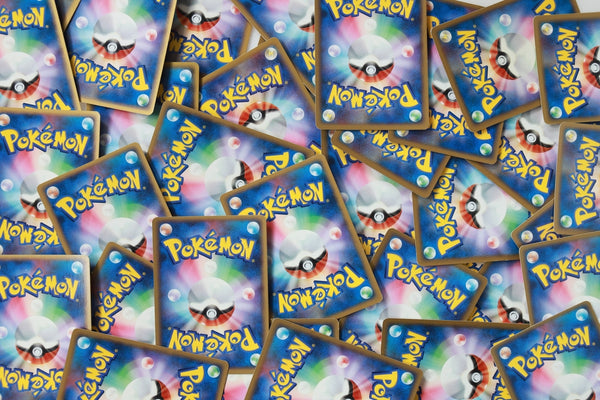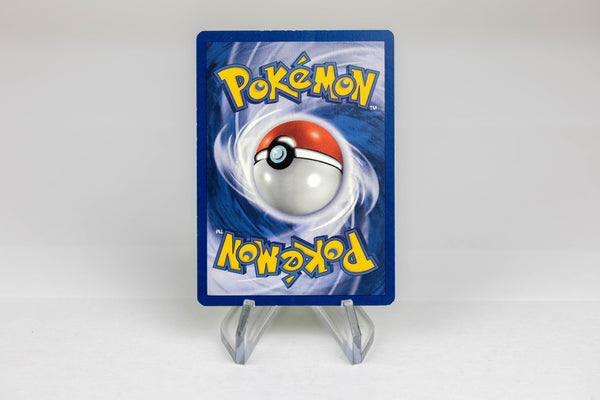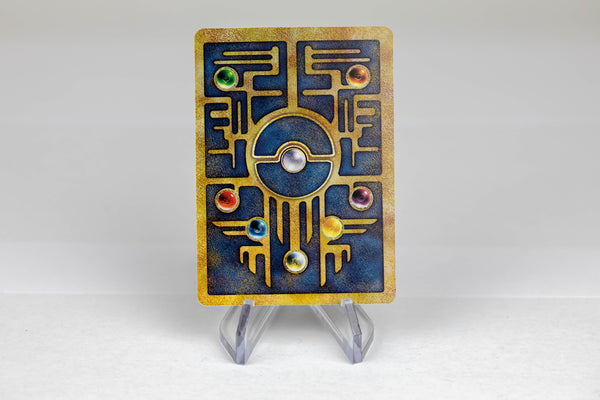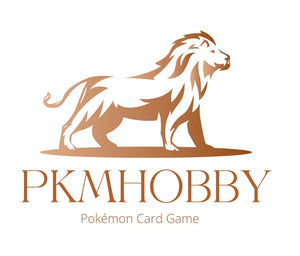For millions of fans worldwide, the back of a Pokémon card is as iconic as a Pikachu's cheek or a Charizard's flame. That deep blue, swirling vortex with the bold "Pokémon" logo is an instant symbol of childhood, strategy, and the thrill of the hunt. But what if we told you that familiar design wasn't the first?
The Pokémon card back holds a fascinating story of evolution, reflecting the game's journey from a Japanese phenomenon to a global sensation. Understanding these changes isn't just a fun piece of trivia; it's a key skill for any serious collector. Let's journey through the Pokémon card history by flipping the cards over.

The Original: The Japanese "Pocket Monsters" Back (1996)
It all started in Japan in 1996. When the first Pokémon cards were released by Media Factory, they featured a design that many modern collectors might not recognize. This old Pokémon card back design is a true piece of history.
- Design: Instead of the familiar logo, it prominently features the text "Pocket Monsters Card Game" in Japanese.
- Aesthetic: The overall look is darker, with a more simplistic Poké Ball graphic and a border that feels distinctly vintage.
- Vibe: This back has a nostalgic, almost mysterious feel. It represents the game in its purest, original form before it exploded onto the world stage.
This design was used for the first couple of years of the game's life in Japan and is a clear marker of a true vintage Japanese card.

Going Global: The Wizards of the Coast International Back (1999)
When Wizards of the Coast (the company behind Magic: The Gathering) licensed Pokémon for an international release in 1999, they knew they needed a globally recognizable brand. This led to the creation of the English Pokémon card back that most of us know and love today.
- Design: The Japanese text was replaced with the bold, now-iconic "Pokémon" logo. The simple Poké Ball was updated with a more dynamic, button-like version at the center of a mesmerizing blue swirl.
- Purpose: This design was engineered for mass appeal. It was brighter, more energetic, and put the powerful Pokémon brand front and center.
- Impact: This back became the standard for every country outside of Japan. It was a strategic move that unified the international player base and created a consistent product look on store shelves from New York to London.
The Modern Standard: A Tale of Two Backs (2003–Present)
In 2003, The Pokémon Company International took over production from Wizards of the Coast. While the card fronts saw a major redesign (goodbye, thick WotC borders!), they made a crucial decision for the back: they kept the international design.
This maintained consistency for players and collectors worldwide, ensuring that older cards remained tournament-legal and visually cohesive with new ones. However, Japan continued to forge its own path.
The Modern Japanese Pokémon Card Back
Around the same time, Japan also updated its card back. While it retained the "Pocket Monsters Card Game" theme, the design was modernized with a brighter blue, a more refined border, and an updated Poké Ball logo.
This is why, to this day, there are two standard Pokémon TCG card back differences:
- The International Back: Used in North America, Europe, and everywhere else.
- The Modern Japanese Back: Used exclusively for cards printed in Japan.
Special & Unique Pokémon Card Backs
While 99% of cards stick to the standard designs, there are some fun exceptions that collectors love to find.
- World Championship Decks: Since 2004, Pokémon has released replica decks of the World Champions' winning hands. To ensure they aren't tournament-legal, these cards have a unique, dated back, often featuring the championship logo. They are fantastic, affordable collectibles for those who want to own a piece of competitive history.
- Carddass Vending Machine Cards: In the late 90s, Bandai produced a popular series of "Carddass" Pokémon cards sold in vending machines. These are not TCG cards and have a completely different back, often with a red or green color scheme. Many new collectors mistake them for fakes, but they are a legitimate and nostalgic part of historical Pokémon cards.

Why the Back Matters to Collectors
A card's back is far more than just decoration; it's a vital tool for collectors.
- Authenticity Check: The back is one of the first places to check for a fake card. Counterfeiters often struggle to replicate the exact shade of blue, the sharpness of the swirl, and the texture of the card stock.
- Region Identification: The back instantly tells you if a card is Japanese or from an international set, which is crucial for determining its market value and rarity.
-
Condition and Grading: When a card is professionally graded, the back is scrutinized just as much as the front. Graders look for:
- Whitening: Tiny white specks or chipping along the blue edges.
- Centering: How evenly the back design is framed by the card's edges.
- Surface: Scratches or scuffs that are often more visible on the dark blue background.
The condition of the back can be the difference between a valuable Gem Mint 10 and a less desirable 8 or 9.
Conclusion: More Than Meets the Eye
The Pokémon card back evolution tells the story of a game growing up. It moved from its humble Japanese beginnings to a unified global identity, all while maintaining its unique regional heritage. From the vintage "Pocket Monsters" design to the universally recognized blue swirl, each back is a snapshot of an era.
So next time you open a pack, take a moment to appreciate the design on the back. It's a small piece of art that holds decades of Pokémon card history in its fibers.
Frequently Asked Questions (FAQ)
Why are Japanese Pokémon card backs different?
Japanese card backs are different for two main reasons. Historically, they had their own design from the game's inception in 1996. When the game went international, a new back was created for global branding. To maintain tournament legality and consistency within their respective regions, Japan and the rest of the world have kept their designs separate ever since.
What was the original Pokémon card back?
The original Pokémon card back was the 1996 Japanese version produced by Media Factory. It featured a dark blue design with the words "Pocket Monsters Card Game" and a simpler Poké Ball graphic, which is distinct from the international version that followed.
Do card backs affect Pokémon card value?
Yes, absolutely. The back's design identifies the card's region (Japanese vs. English), which affects its value. Furthermore, the condition of the back is a critical factor in professional grading. Edge whitening, poor centering, and surface scratches on the back will lower a card's grade and, consequently, its market value.

